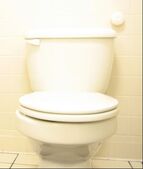 Traditional toilets use up a lot of water which may make a homeowner look for an option that is a little more friendly to the environment. One alternative that is becoming more popular these days is a pressure-assist toilet. How is it different from a standard type of toilet? From the outside, you may not notice much difference between a pressure-assist toilet and a traditional kind. When you look inside the ceramic tank, however, they are very different. The pressure assist toilet has an air-filled pressure container that forces compressed air to push water into the toilet bowl when it is flushed at a very powerful rate. This results in far fewer clogs in the system, due to the power of the flush. It also uses a lot less water than a standard gravity toilet does, making it less harsh environmentally. Can pressure-assist toilets be installed in older homes? Although they are often used in new construction, pressure-assist toilets can also be installed in older homes and there are some benefits to doing so. For example, due to the age of the pipework waste often becomes trapped in the system and a gravity toilet alone cannot unclog it. The force of the flush in a pressure-assist toilet helps push the waste through a lot easier, preventing clogs. The tank's design also means that condensation does not build up. Are there any disadvantages with a pressure-assist toilet? Although these types of toilets require less maintenance than a standard type, they do cost more. Many people are also put off by how loud the flush is. Another problem is that to work well, pressure-assist toilets need at least 20 to 30 PSI of pressure which may be an issue in homes that have low water pressure. Leave a Reply. |
AuthorPARKER AND WEST ENGINEERING, PLLC. Archives
February 2021
Categories |

 RSS Feed
RSS Feed